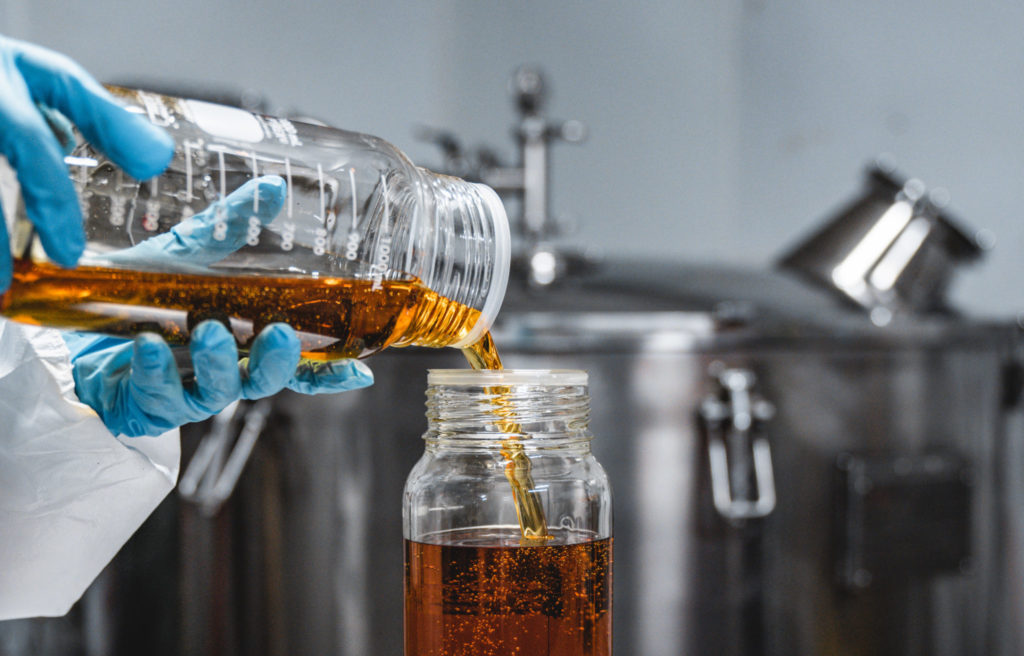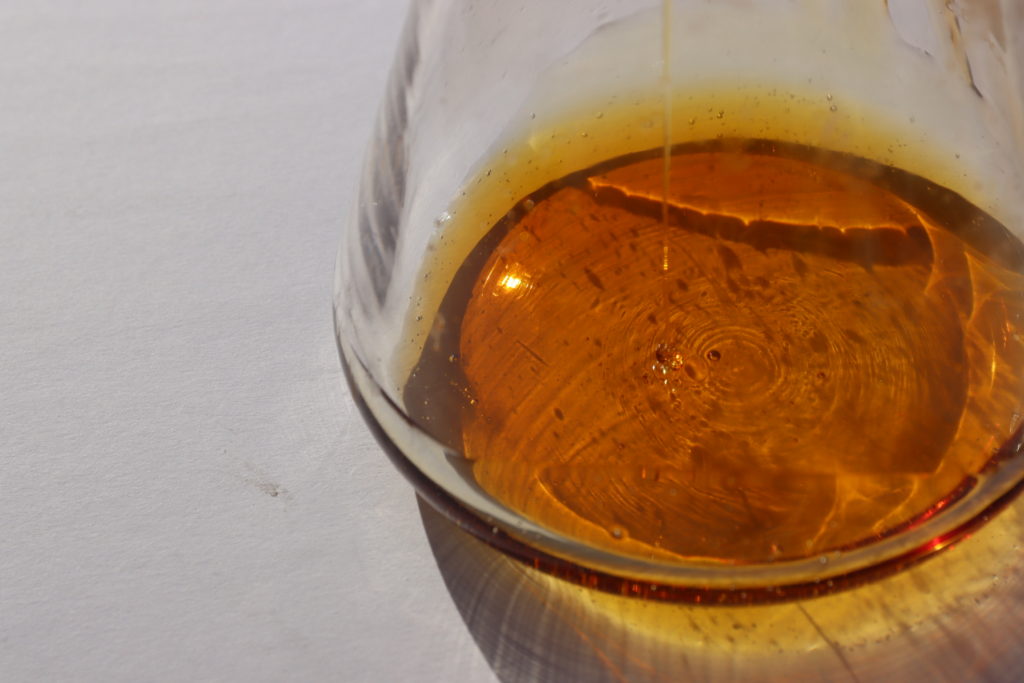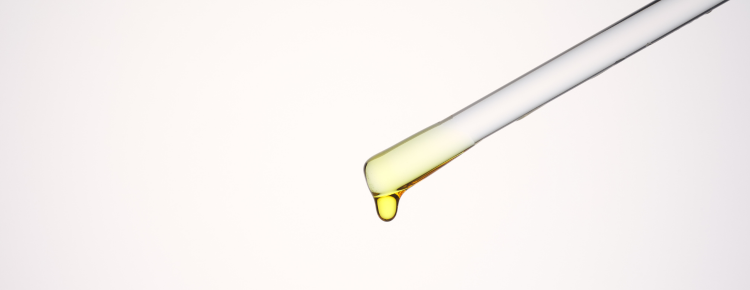Cannabinoids are complex substances that come in many different forms. For research purposes, it’s important to label and categorize each and every unique substance found in Cannabis sativa. For average consumers, though, the arcane mysteries like the differences between CBE and CBD aren’t as relevant — even if they are fascinating.
CBE is a cannabinoid that’s just now appearing on the market in consumer-grade products. What does CBE do, and what role might it play in the future of the hemp industry? Find out in this guide.

When was CBE discovered?
Cannabielsoin (CBE) was discovered in 1973¹ as part of ongoing efforts to firmly establish the endlessly complex pharmacology of cannabis.1 It was originally stumbled upon as part of an experiment that involved heating cannabis extracts in oxygen-free environments, and it took until 1991² for cannabielsoin to be recognized as a metabolite of cannabidiol (CBD).
Chemical compounds rarely stay in the same form after they enter your body. Instead, they usually transform into substances called metabolites after encountering native tissues. CBE is simply a natural step along the way as the CBD you ingest in hemp products is processed by your body.
Is CBE a natural cannabinoid?
Yes, CBE is considered to be a natural cannabinoid since it is not produced using synthetic means. However, CBE only naturally occurs when CBD is exposed to enzymes in your body, so technically, CBE is not naturally occurring in cannabis.
This seemingly unimportant fact has one significant impact: CBE can only be made outside the human body by exposing CBD to synthetic approximations of digestive enzymes. As a result, any CBE you find for sale online is certain to be synthetic at least to this degree.
Where does CBE come from?
CBE comes into existence when digestive enzymes transform CBD inside the human body. You cannot derive CBE directly from cannabis and hemp, and to be sold for research or consumption purposes, it must be enzymatically converted. In some cases, synthetic forms of human liver enzymes are used, but it has also been demonstrated that CBE can be converted from CBD using cannabis suspension cultures³.
What does CBE do?
CBE is generally believed to offer effects that are very similar to the effects of CBD. A paucity of scientific evidence exists regarding the effects of CBE, however, and since products containing consumer-grade CBE are very new to the market, there isn’t much anecdotal evidence either.
Based on the simple fact that CBE is not considerably structurally different from CBD, though, we can expect the two cannabinoids to behave similarly in the human body. If — as has been the case with CBDa and other alternative forms of CBD — CBE is discovered to offer unique benefits, this CBD derivative may become desirable for specific therapeutic applications.
How does CBE work?
Given the fact that we still know very little about what CBE even is, it’s hard to speculate regarding the potential mechanisms of action this CBD derivative might use in the human body. Based on the assumption that CBE behaves similarly to CBD, though, it’s reasonable to expect that this cannabinoid might interact with your 5-HT⁴ and TRP⁵ neuroreceptors, which are the primary neurological targets of CBD.

What are the benefits of CBE?
Even though we still know so little about CBE, it’s still possible to speculate on the potential therapeutic benefits of this compound. CBE also has certain undeniable practical benefits.
First, CBE’s chemical closeness to CBD gives us a significant leg up when researching this cannabinoid. So much has already been learned about CBD that studying CBE doesn’t need to involve reinventing the wheel.
CBE is also believed to be non-intoxicating, and there’s no reason to believe it is unsafe.
Like CBD, CBE may end up being researched for its usefulness against anxiety, depression, pain, epilepsy, and other conditions. For that to happen, though, CBE must first be demonstrated to have some amount of practical utility.
Is CBE legal?
There are no laws or regulations specifically targeting CBE, so this cannabinoid is generally considered to be a hemp substance under the 2018 Farm Bill. The DEA has clarified⁶, however, that it views modified cannabinoids like CBE differently than unmodified, natural cannabinoids found in Cannabis sativa. Theoretically, therefore, CBE might be regulated differently from CBD.
Can you buy CBE online?
Yes, the world’s first consumer-grade CBE products are beginning to appear online. That’s right: CBE will soon be available in the same types of tinctures, gummies, and capsules that we’re all accustomed to containing CBD, CBG, and other cannabinoids that are abundant in cannabis.
Since CBE was still only available from bulk chemical suppliers not so long ago, it pays to be cautious with CBE products you find on the internet. Prefer labs with abundant certifications that perform thorough in-house contaminant testing.
The bottom line: Is CBE worth trying?
At this point, the question isn’t whether CBE is worth trying but rather if it’s even possible to try CBE in the first place. With the only types of CBE products available online consisting of overpriced isolate extracts mostly used in university research labs, you’ll be hard pressed to find opportunities to try CBE even if you’d like to.
Think about it this way, though: You already use CBE every time you use CBD. Never forget that CBE is, first and foremost, a metabolite that CBD turns into as it is processed by your body. At a certain point, every CBD molecule you ingest becomes CBE, and then it continues on throughout your body in its new form.
That’s part of the reason CBE hasn’t become more popular. There usually isn’t much of a market for metabolites that transform right after ingestion unless an unexpected application can be found. CBE could well be the next wonder cure for something, but for exactly what, we don’t yet know.
CBE FAQs
Learn more about CBE from the answers to these frequently asked questions:
1. How many different cannabinoids are there?
Estimates indicate that well over 100 different cannabinoids have been discovered. Some of these cannabinoids (like CBD) naturally occur in cannabis and hemp, but others only appear after they interact with the human body.
Most cannabinoids, in fact, are simply iterations of a core group of around 10 substances. For example, CBD has two alternate forms: CBDa, a precursor substance, and CBDV, an entirely separate but very similar cannabinoid.
Then, CBDV also has its own precursor, CBDVa. You can see how things get complicated quickly. It might be quite some time until we establish exactly how many cannabinoids there are.
2. Is cannabielsoin the same thing as cannabifuran?
No, even though their acronyms are deceptively similar, cannabielsoin (CBE) and cannabifuran (CBF)⁷ aren’t at all related. CBF is believed to be a derivative of THC and have intoxicating properties, but we know even less about CBF at this point than we do about CBE. For instance, it’s not even clear whether CBF naturally occurs in cannabis or if it can only be synthesized.
3. Does CBE come from CBD?
Yes, CBE is a derivative of CBD. This cannabinoid is derived from CBD when it is exposed to liver enzymes after ingestion. Based on the limited research that has been conducted into CBE so far, this cannabinoid appears to essentially behave as a “watered-down” form of CBD that has already been partially processed by your body.
4. Is there CBE in CBD products?
No, CBD products do not contain CBE since this cannabinoid does not naturally occur in cannabis or hemp. Instead, CBE naturally occurs in the human body when CBD is exposed to digestive enzymes. As a result, you could say that CBD products are filled to the brim with “potential” CBE molecules, but they don’t contain any CBE at all until after you ingest them.
5. Is there a CBM cannabinoid?
Yes, there is a cannabinoid known as CBM or cannabimovone. Only just discovered in 2010, CBM is one of the newest and most mysterious cannabinoids, but initial research⁸ has been conducted to determine the usefulness of CBM for conditions as varied as eating disorders and diabetes.
6. What is the difference between CBD and CBE?
The primary differences between CBD and CBE are their rarity and the amount of research that has been conducted on each cannabinoid, which ultimately are related variables. The reason CBE has received hardly any research attention is that it is very rare.
CBD, on the other hand, has been researched intently for multiple decades due to its abundance, and it now composes a major portion of the global hemp and cannabis industry. In terms of effects, it’s hard to know exactly how CBD and CBE compare since so little is known about CBE in general.
7. Where can I buy bulk CBE distillate?
At this point, we aren’t aware of any safe or reputable sources of CBE distillate. This cannabinoid is too new and little-known to be produced in great quantities, and the producers who make it do so only for research purposes.
The type of CBE you can buy online comes in isolate, not distillate form, and it is not suited for human consumption. It will likely be a few years before reputable sources of CBE appear on the market.
8. Is cannabielsoin psychoactive?
There is no reason to believe CBE is intoxicating, and its chemical structure resembles that of a non-intoxicating cannabinoid. Every cannabinoid so-far discovered, however, is psychoactive to some degree.
Even CBD is psychoactive — it just doesn’t cause the type of intoxicating psychoactivity associated with THC. Hopefully CBE is determined to be psychoactive in some ways just as long as it stays the case that this cannabinoid is judged non-intoxicating.
9. What are the effects of cannabielsoin?
We don’t know enough about CBE to say much about its effects. All we know for certain is that anecdotal reports indicate that this cannabinoid feels a lot like CBD.
Sources
- 1. Küppers, F. J. E. M., Lousberg, R. C., Bercht, C. A. L., Salemink, C. A., Terlouw, J. K., Heerma, W., & Laven, A. (1973). Cannabis—VIII: pyrolysis of Cannabidiol. Structure elucidation of the main pyrolytic product. Tetrahedron, 29(18), 2797-2802. Retrieved from https://www.sciencedirect.com/science/article/abs/pii/S0040402001934040
- 2. Yamamoto, I., Gohda, H., Narimatsu, S., Watanabe, K., & Yoshimura, H. (1991). Cannabielsoin as a new metabolite of cannabidiol in mammals. Pharmacology Biochemistry and Behavior, 40(3), 541-546. Retrieved from https://www.sciencedirect.com/science/article/abs/pii/009130579190360E
- 3. Hartsel, S., Loh, W., & Robertson, L. (1983). Biotransformation of Cannabidiol to Cannabielsoin by Suspension Cultures of Cannabis sativa and Saccharum officinarum. Planta Medica, 48(05), 17–19. Retrieved from https://www.thieme-connect.com/products/ejournals/abstract/10.1055/s-2007-969870
- 4. Martínez-Aguirre, C., Carmona-Cruz, F., Velasco, A. L., Velasco, F., Aguado-Carrillo, G., Cuéllar-Herrera, M., & Rocha, L. (2020). Cannabidiol Acts at 5-HT1A Receptors in the Human Brain: Relevance for Treating Temporal Lobe Epilepsy. Frontiers in Behavioral Neuroscience, 14. Retrieved from https://www.frontiersin.org/articles/10.3389/fnbeh.2020.611278/full
- 5. Muller, C., & Reggio, P. H. (2020). An Analysis of the Putative CBD Binding Site in the Ionotropic Cannabinoid Receptors. Frontiers in Cellular Neuroscience, 14. Retrieved from https://www.frontiersin.org/articles/10.3389/fncel.2020.615811/full
- 6. Jaeger, K. (2021, November 4). DEA Emboldens Delta-8 Hemp Businesses By Signaling That The Cannabinoid Is Federally Legal. Marijuana Moment. Retrieved from https://www.marijuanamoment.net/dea-emboldens-delta-8-hemp-businesses-by-signaling-that-the-cannabinoid-is-federally-legal/
- 7. Novák, J., & Salemink, C. A. (1983). Cannabis. Part 28. A new route to the synthesis of cannabifuran. Journal of the Chemical Society, Perkin Transactions 1, 2873-2877. Retrieved from https://pubs.rsc.org/en/content/articlehtml/1983/p1/p19830002873
- 8. Iannotti, F. A., De Maio, F., Panza, E., Appendino, G., Taglialatela-Scafati, O., De Petrocellis, L., … & Vitale, R. M. (2020). Identification and characterization of cannabimovone, a cannabinoid from Cannabis sativa, as a novel PPARγ agonist via a combined computational and functional study. Molecules, 25(5), 1119. Retrieved from https://www.mdpi.com/1420-3049/25/5/1119/htm







